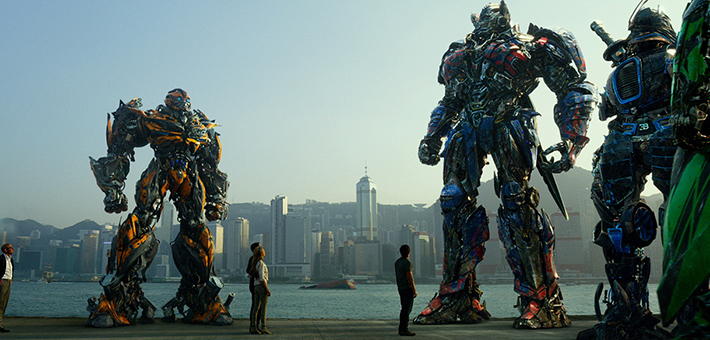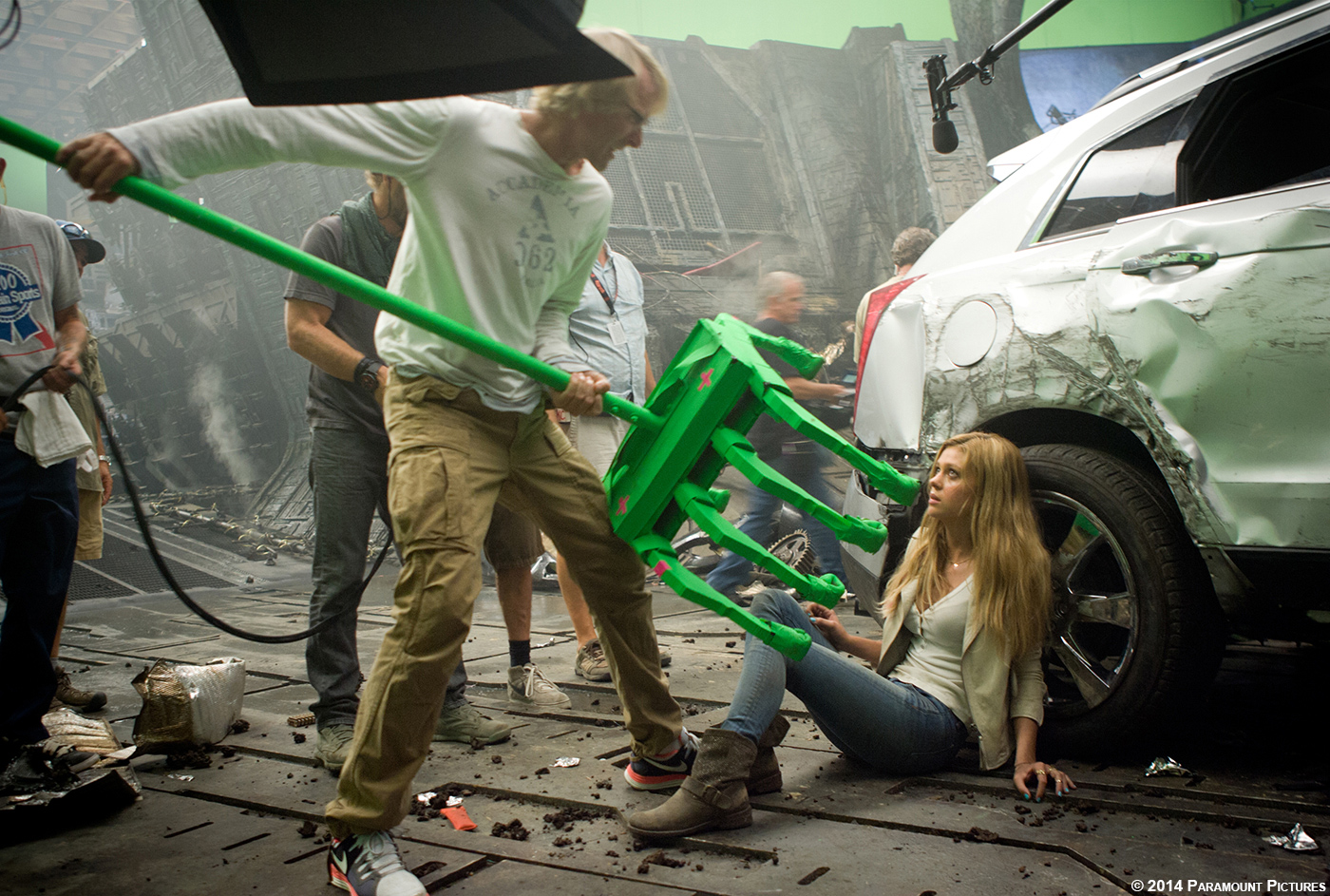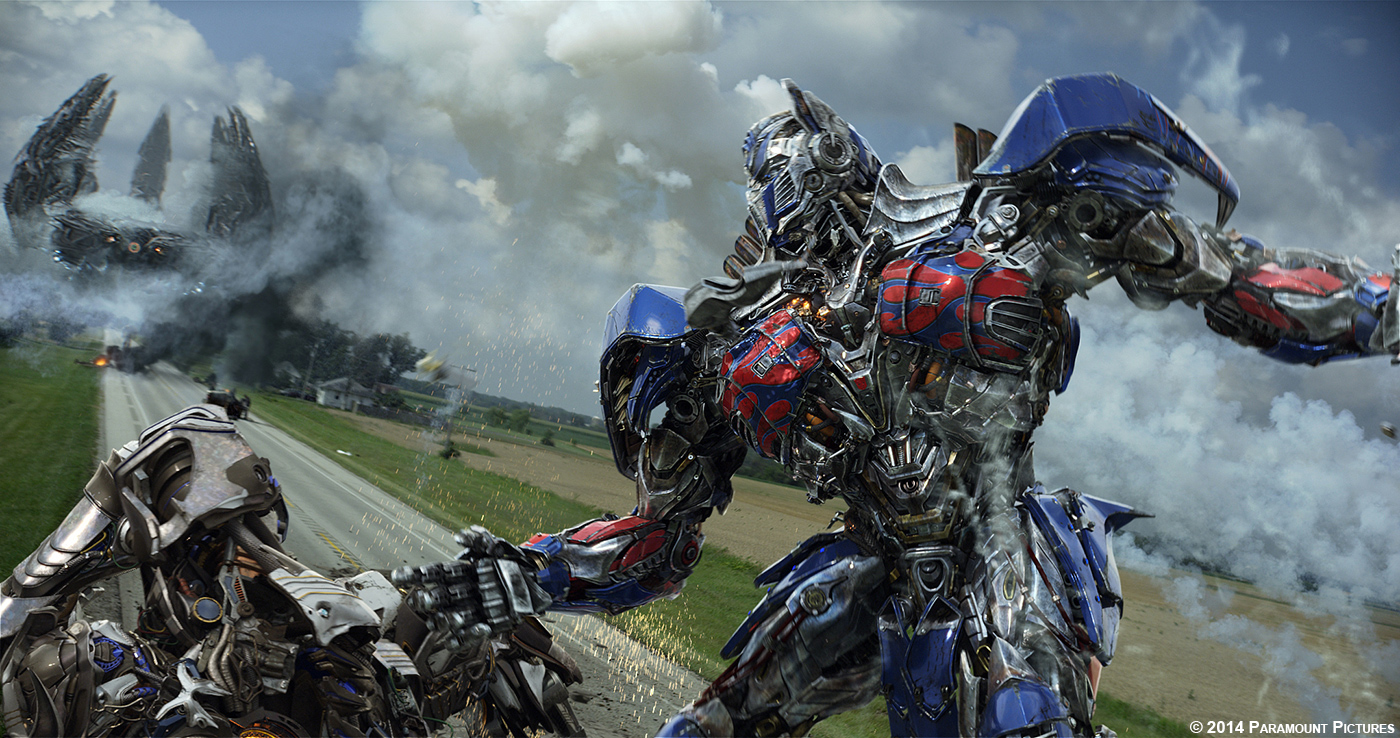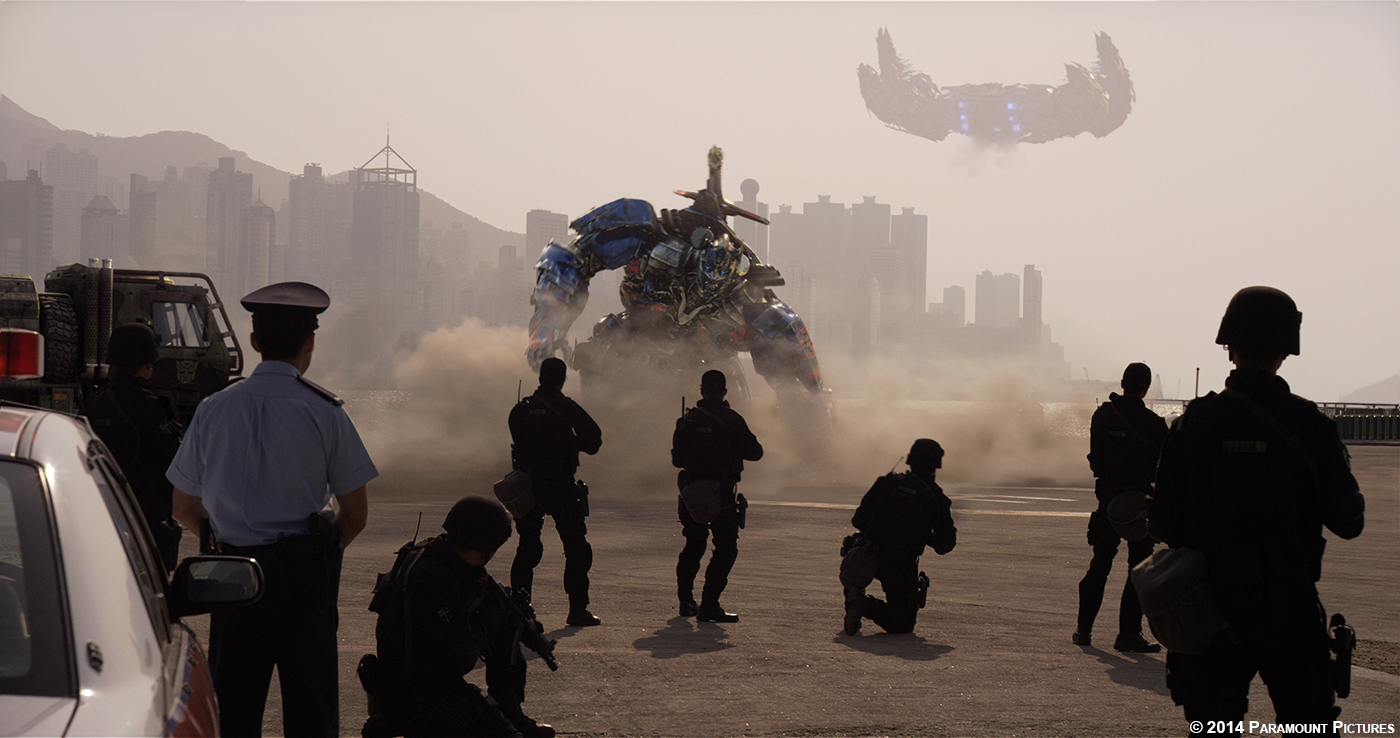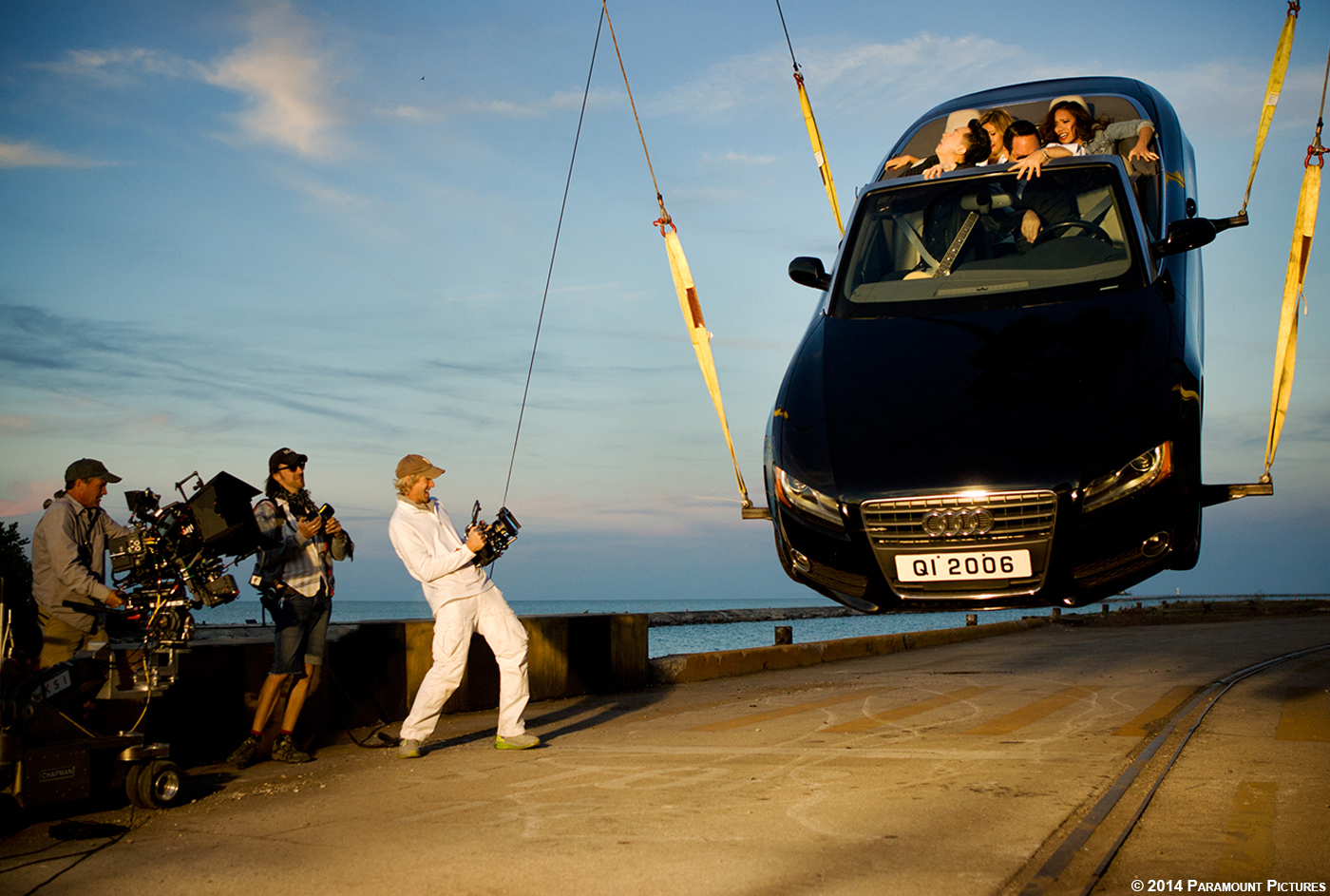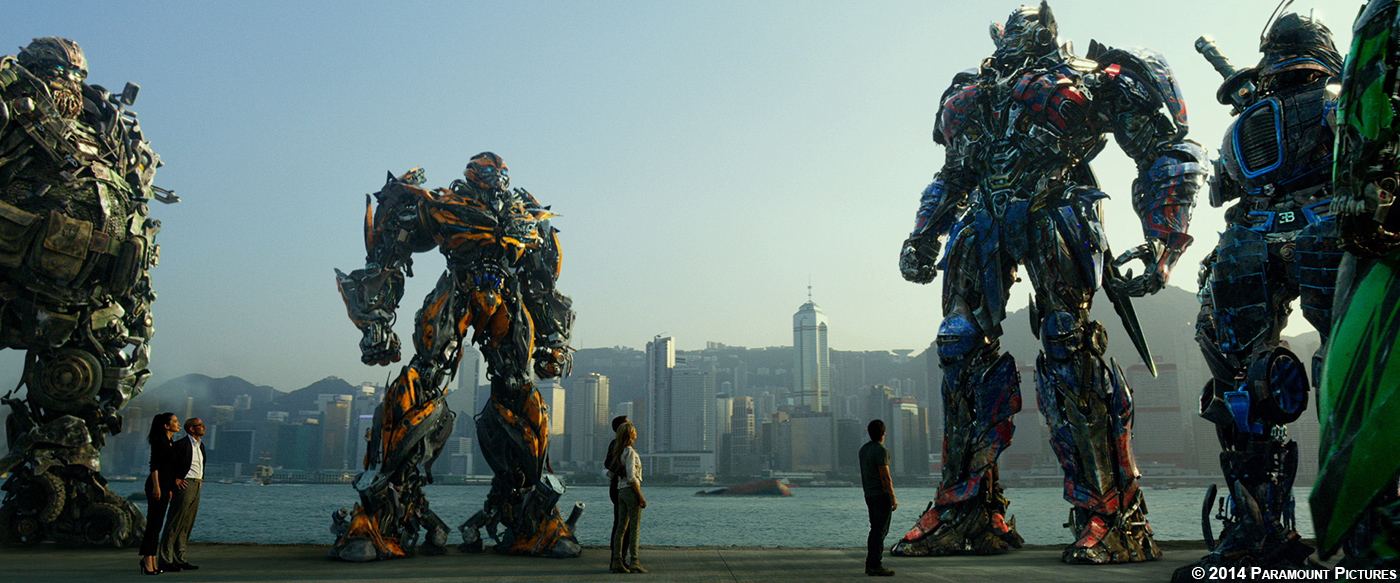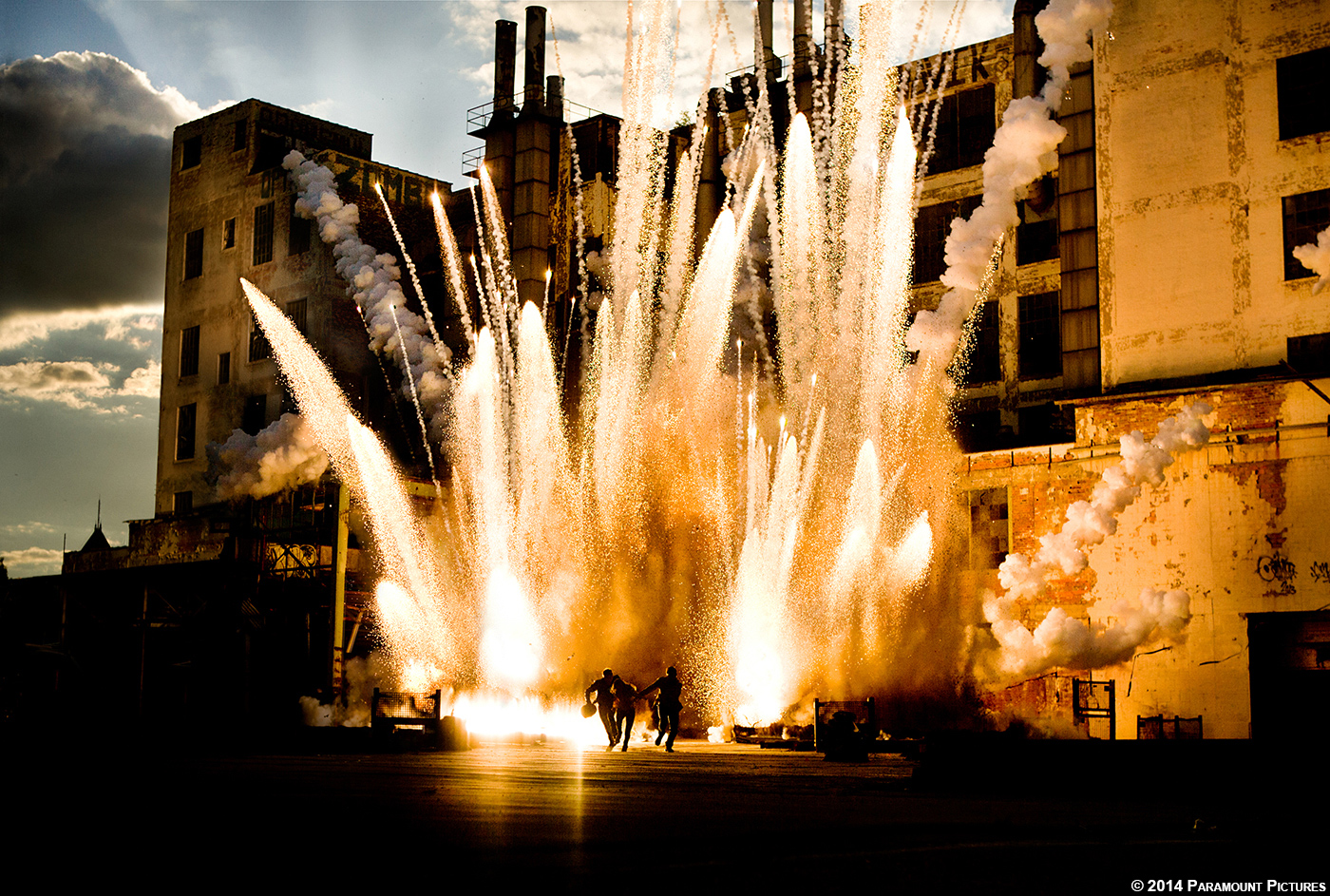Since his last visit, Scott Farrar has worked on the visual effects of THE HUNGER GAMES and WORLD WAR Z. He is now back in the Transformers universe with this new episode.
What was the expectations of Michael Bay about this new movie?
Michael did not want this to be a reboot this was a new beginning of a new franchise. It was a new cast of characters and we introduce new robots as assailants and good guys.
Compared to TRANSFORMERS: DARK OF THE MOON how did you approach this new episode?
Again, it’s all about design, and Michael had some great artwork turned out by the LA art department. One particular image really struck me; it gave me ideas for the film. It’s a view of Lockdown walking down the road through a telephoto lens with this gigantic ship trailing him many stories high. The ship is shrouded in mist and fog. So I said the Michael, let’s have the ship generated in its own weather system and all the shots cover it up. It’s something different and that’s what we did. And I think it looks really compelling.
How did you work with VFX Supervisor Patrick Tubach and Jeff White?
Both Patrick and Jeff have worked with me throughout the eight years or so on all the TRANSFORMERS. So we working a kind of a shorthand we all understand what the look should be, what the movement should be, how to approach the lighting. And both these guys are really great team leaders in their own right. Jeff did a lot of the helicopter photography in Chicago and covered for me on set at times. Patrick was back at ILM getting the show started then, after principle photography wrapped, we worked in the office together, and reviewed shots in the theater for eight hours a day every day for seven months, and after all that we still enjoy working with each other!
Can you describe one of your days on-set and then during the post?
On set I monitor all the shots, record what the camera sees and its position in relationship to where the robots will be later. I also do second unit directing, and help with some photography. Then back at ILM we’re continually refining the assets making the robots look better, they change as we see them in different angles and through different lenses. The updates continue to the very end. Really every day I spend lighting all the robots just like the DP onset. For me, that’s the most creative part of the work.
The movie opens on giant aliens ships. How did you design and build these spaceships?
The production art department under Jeffrey Beecroft designed the look of the ships. We wanted to give them a prehistoric look, especially with regard to the backgrounds, so ultimately I was sent to Iceland to shoot aerials and ground-based photography to give the film a new fresh look. And I think it really works.
Can you tell us more about the metal explosions caused by the aliens and later with Lockdown grenades?
The idea was that these pods would drop either from the spaceships or from Lockdown, causing a metallizing effect where the entire landscape would be encapsulated in “Transformium” – a metallic substance originating from the Transformers home planet. While we developed new and interesting fluid simulations in CG, John Fraser, the Special Effects Supervisor, came up with a great-looking Pyro effect created by filling several dozen trays with explosives and dirt that would trigger sequentially skyward. Put the actors running in front of them and you’ve created an amazing shot!
How have you improved the rigging and lighting for the various Transformers?
With each film the rigging only gets more complicated. There are more moving parts on every robot we do. The lighting gets more complicated each film as well because we want to break new ground and personally I like to try new things. This time I went for a « film noir » look, even to the point of having the slash of light on the eyes of the characters.
Many transformers got damaged and destroyed. How did you handle this part?
The hardest part about damage or destruction is that each iteration has to actually be built, just the same as you would a physical set or set piece. In other words Optimus had three different model versions and 4 different damage levels. Not to mention different lighting characteristics scorching dirt and scuff marks. It’s a real exercise in continuity and since typically we are working out of order from how the shots may ultimately appear in the final film we have to stay on top of each scrape, dent and area of damage to insure that from scene to scene and shot to shot we are maintaining the continuity as necessary.
Can you tell us more about the main challenges with the Dinobots?
The Dinobots needed to look like dinosaurs, yet appear as though they are constructed from geometric metallic forms. So we approached their construction similar to that of the Autobot robots, we put lots of nuts, bolts, bearings, even pistons in or on the characters. Visually we always try to remind the audience that these are metallic characters, everything has to reflect this – their structure, the way the light reflects off the surfaces, the way dirt, weeds, grease or leaves stick to them.
Was there a shot or a sequence that prevented you from sleep?
I’m not sure I lost sleep, but I can say my dreams were only about robots!
What do you keep from this experience?
The most impressive part of the show was my crew! Their effort was monumental, and their shots look spectacular!
How long have you worked on this show?
About a year and a half.
How many shots have you done?
A little over 600 shots.
What was the size of your team?
This was the largest crew I’ve ever had over 550 people just at ILM in our San Francisco, Singapore and Vancouver offices, and we were also working with a strategic partner of ours, Base FX in Beijing.
What is your next project?
Vacation!
A big thanks for your time.
// WANT TO KNOW MORE?
– ILM: Official website of Industrial Light & Magic.
© Vincent Frei – The Art of VFX – 2014

